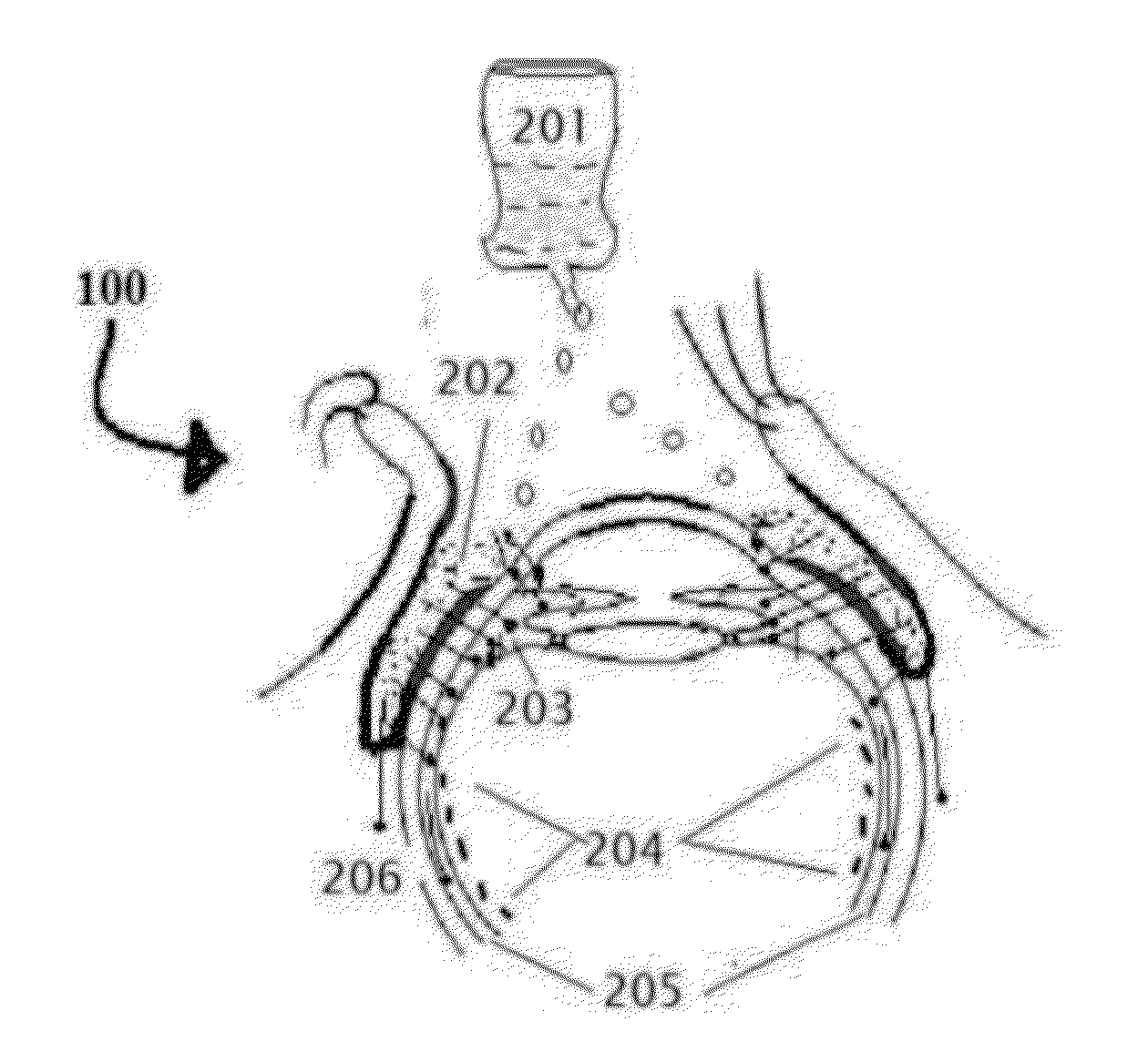Age related macular degeneration treatment
a macular degeneration and age-related technology, applied in the field of age-related macular degeneration (amd) diseases of the retina, can solve the problems of difficulty in adapting to low light, reduced color intensity, trouble recognizing, etc., and achieves the effects of reducing blood cholesterol, reducing edema, and reducing drusen formation
- Summary
- Abstract
- Description
- Claims
- Application Information
AI Technical Summary
Benefits of technology
Problems solved by technology
Method used
Image
Examples
example 1
[0263]Select the patient; establish the type of Age related macular degeneration and its etiology, if possible, which the person is suffering from. The complete and thorough examination of the eye as described above is imperative. Record the preliminary examination results on the patient chart. The patient examined for any corneal, conjunctival, and retinal BV afflictions by using marker dyes and other ophthalmological examinations.[0264]I. Position the patient in a supine posture or sitting with the head hyper extended with a support.[0265]II. Prepare 0.05% povidone iodine in normal saline. Instill one or two drops to the conjunctional sac, wait 5 minutes for it to act on conjunctival lining and oxidize reduced glutathione to prevent it breaking the disulfide bonds of insulin.[0266]III. Using a dropper or dropper bottle containing the insulin formulations. Insulin is prepared in 5 ml normal saline insulin dropper or plastic squeeze instiller. Instill two or three drops of insulin p...
example 2
[0272]This is a 70-year-old patient diagnosed with wet AMD in right eye with CNV, associated with slight edema. The left eye had early symptoms of dry AMD, with still had good vision. It has had Drusen deposits in the macula, but no angiogenesis. The patient refused to undergo once every six-week intravitreal injection of anti-angiogenesis monoclonal antibody, Bevacizumab (trade name AVASTIN™, Genentech / Roche). AVASTIN (bevacizumab) is a recombinant humanized monoclonal IgG1 antibody that binds to and inhibits the biologic activity of human vascular endothelial growth factor (VEGF) in vitro and in vivo. It blocks angiogenesis, the growth of new blood vessels. This therapeutic agent used in doses of 8.3 to 10 mg in 0.3 ml solution injected in to the vitreous. It is not FDA approved for treating wet AMD, but many ophthalmologists use it off label. One of the advantages of these monoclonal antibodies is that it many times less expensive compared to another FDA approved monoclonal antib...
example 3
[0284]I. Follow the instruction as described in the above EXAMPLE 1.[0285]II. Instead of using Bevacizumab, use Ranibizumab monoclonal antibodies ophthalmic drops in similar way as described in example 2.
PUM
| Property | Measurement | Unit |
|---|---|---|
| Fraction | aaaaa | aaaaa |
| Fraction | aaaaa | aaaaa |
Abstract
Description
Claims
Application Information
 Login to View More
Login to View More - R&D
- Intellectual Property
- Life Sciences
- Materials
- Tech Scout
- Unparalleled Data Quality
- Higher Quality Content
- 60% Fewer Hallucinations
Browse by: Latest US Patents, China's latest patents, Technical Efficacy Thesaurus, Application Domain, Technology Topic, Popular Technical Reports.
© 2025 PatSnap. All rights reserved.Legal|Privacy policy|Modern Slavery Act Transparency Statement|Sitemap|About US| Contact US: help@patsnap.com



